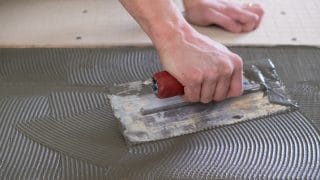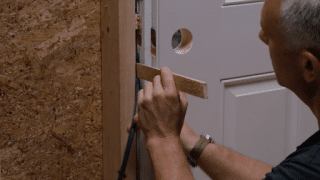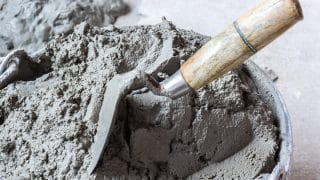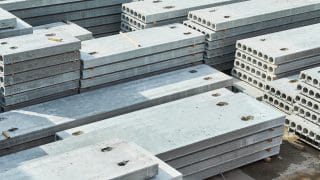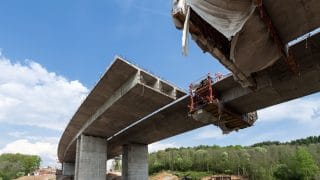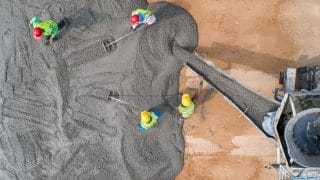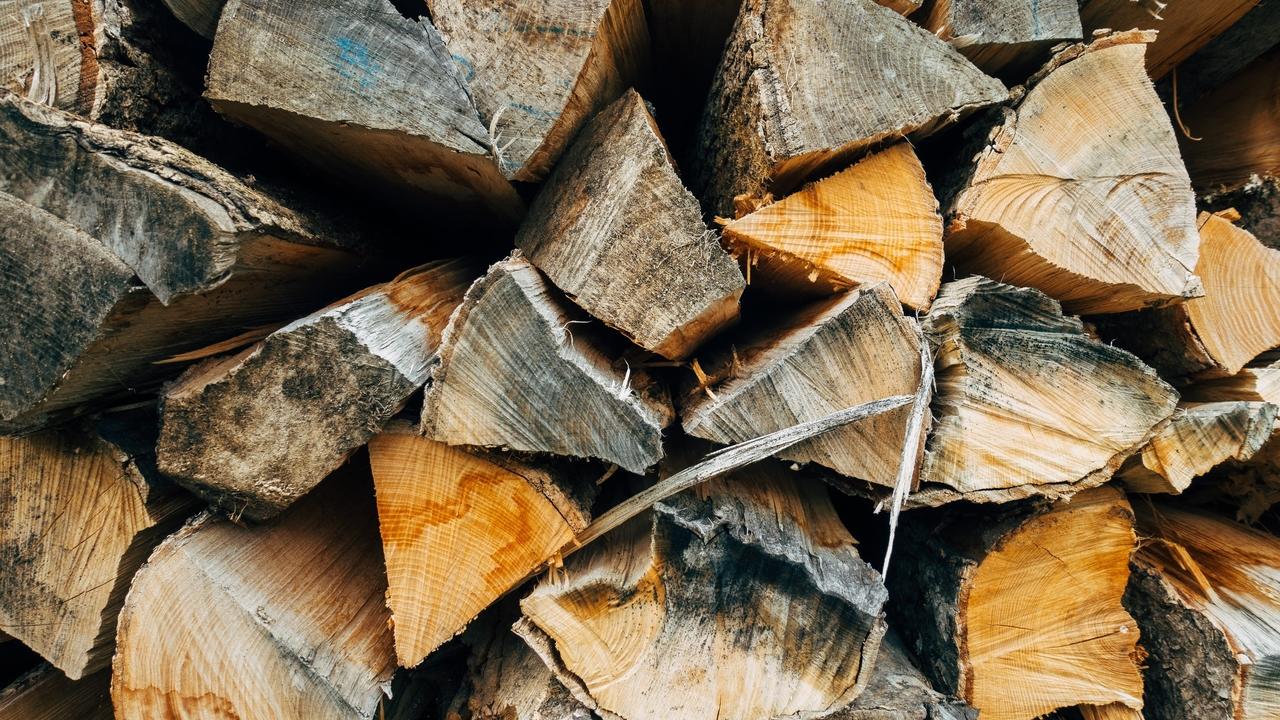
In order to find the right type of wood for every construction project, builders refer to the strength of a wood. Different woods, classified into hardwoods and softwoods, are good for different types of projects.
Wood strength is not given in a single measurement. It is expressed using a number of measures, such as its density (the weight per a given volume); its compressive strength (or how great a weight a load of wood can bear parallel to the grain before it ruptures); its bending strength (a load of wood perpendicular to the grain); and its hardness.
The strength of wood fiber is very consistent across all tree species, and the strength of the wood is dependent on how many fibers are packed into a given area. Because of this fact, a wood’s density correlates very closely to its strength and hardness. In other words, if you know a wood’s comparative density, you can get a good approximation of its hardness and strength.
You can also use a wood’s hardness to determine its relative strength compared to other woods. Hardness is an especially useful measure of a wood’s suitability for flooring.
A wood’s strength isn’t static, however. It varies with the direction of the wood grain. Professional builder and craftsman Jordan Smith explains:
“Wood is an anisotropic material, meaning that it is stronger in certain directions than in others. And it’s the strongest with the grain.”
How is wood hardness measured?
Hardness is the measure of wood’s ability to resist denting and scratching. The lumber industry rates a wood’s hardness using the Janka hardness scale, which measures how many pounds of force (lbf) it takes to drive a 0.444 inch steel ball halfway into the wood’s face grain. The more force it takes to drive the ball into the wood, the harder the wood, and the higher the Janka rating. Common red oak has a Janka hardness of 1220 lbf, meaning it takes 1220 pounds of force to drive the steel ball halfway into the wood. For reference, soft balsa wood requires only 67 lbf and the hardest wood in the world, Australian Buloke, has a Janka hardness of 5060 lbf.
In order to find the right type of wood for every construction project, builders refer to the strength of a wood. Different woods, classified into hardwoods and softwoods, are good for different types of projects.
Wood strength is not given in a single measurement. It is expressed using a number of measures, such as its density (the weight per a given volume); its compressive strength (or how great a weight a load of wood can bear parallel to the grain before it ruptures); its bending strength (a load of wood perpendicular to the grain); and its hardness.
The strength of wood fiber is very consistent across all tree species, and the strength of the wood is dependent on how many fibers are packed into a given area. Because of this fact, a wood’s density correlates very closely to its strength and hardness. In other words, if you know a wood’s comparative density, you can get a good approximation of its hardness and strength.
You can also use a wood’s hardness to determine its relative strength compared to other woods. Hardness is an especially useful measure of a wood’s suitability for flooring.
A wood’s strength isn’t static, however. It varies with the direction of the wood grain. Professional builder and craftsman Jordan Smith explains:
“Wood is an anisotropic material, meaning that it is stronger in certain directions than in others. And it’s the strongest with the grain.”
How is wood hardness measured?
Hardness is the measure of wood’s ability to resist denting and scratching. The lumber industry rates a wood’s hardness using the Janka hardness scale, which measures how many pounds of force (lbf) it takes to drive a 0.444 inch steel ball halfway into the wood’s face grain. The more force it takes to drive the ball into the wood, the harder the wood, and the higher the Janka rating. Common red oak has a Janka hardness of 1220 lbf, meaning it takes 1220 pounds of force to drive the steel ball halfway into the wood. For reference, soft balsa wood requires only 67 lbf and the hardest wood in the world, Australian Buloke, has a Janka hardness of 5060 lbf.
Learn all about the properties of wood and how wood is used in construction in the MT Copeland course on Wood Materials. Taught by professional builder Jordan Smith, the course covers topics that range from I-joists to shear strength.
Top 5 hardest woods in the world
The following five hardwoods are ranked the highest in the world on the Janka Scale.
- Australian Buloke: This is an ironwood tree that is native to Australia, with a Janka hardness of 5,060 lbf.
- Schinopsis brasiliensis: A species of flowering plant in the cashew family, this tree originates in Brazil and ranks #2 with a toughness of 4,800 lbf.
- Schinopsis balansae: This tree (4,570 lbf) makes up large areas of forest in Argentina and Paraguay and can grow to nearly 80 feet high. It is commonly used in home and building construction.
- Lignum vitae: This Caribbean and South American hardwood is famous for its combination of strength, density and toughness, and has a Janka hardness of 4,500 lbf. It has long been used in applications that require extreme durability, like ship construction. It also has natural properties like water resistance, since it is infused with a wax-like resin.
- Piptadenia macrocarpa: Areas in Argentina, Bolivia, and Peru grow this hardwood, which has a Janka hardness rating of 3,840 lbf.
Common Woods and Their Hardness
While the above hardwoods are ranked the hardest on the Janka scale, they might not be the most familiar. For perspective, here are some of the hardest commercially available hardwoods:
- Hickory: Because hickory can be an inexpensive building option and is harvested from domestic trees, builders use it in different kinds of building projects, including home construction. It has a hardness rating of 1820.
- Ash: Strong but not as heavy as some other hardwoods, ash is able to absorb shock without splintering, which makes it a good wood for sporting equipment. It has a hardness rating of 1320.
- Oak: Oak is still rated hard, even though it ranks lower than some other hardwoods (1290). Because it’s readily available in North America and a lower-cost option than some other hardwood options, it’s a popular choice for building.
- Cherry: With a “very hard” (950) Janka rating, cherry has a red undertone that makes it great for decorative pieces. Because of its cost, it is used for special pieces such as cabinetry and furniture.
Just because a wood is classified as a hardwood (meaning that the tree produces seeds that have a coating in the form of a fruit or a shell) doesn’t mean the wood is necessarily hard. In fact, the three softest woods according to the Janka rating system are technically hardwood species. Balsa, a deciduous angiosperm, is classified as a hardwood, and is the softest commercial hardwood available.
MT Copeland offers video-based online classes that give you a foundation in construction fundamentals with real-world applications. Classes include professionally produced videos taught by practicing craftspeople, and supplementary downloads like quizzes, blueprints, and other materials to help you master the skills.


